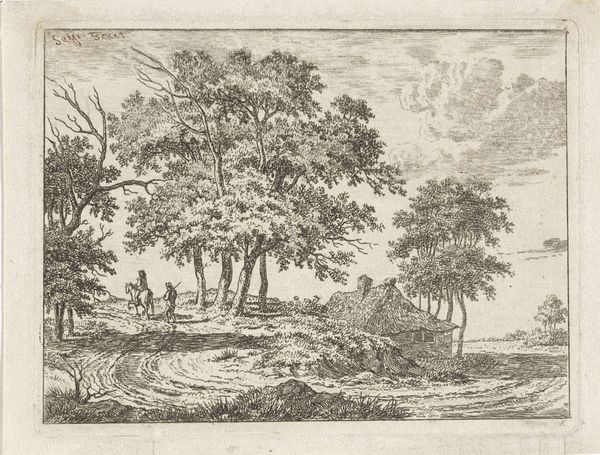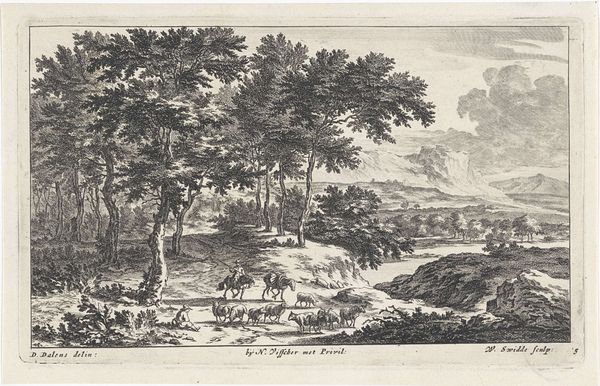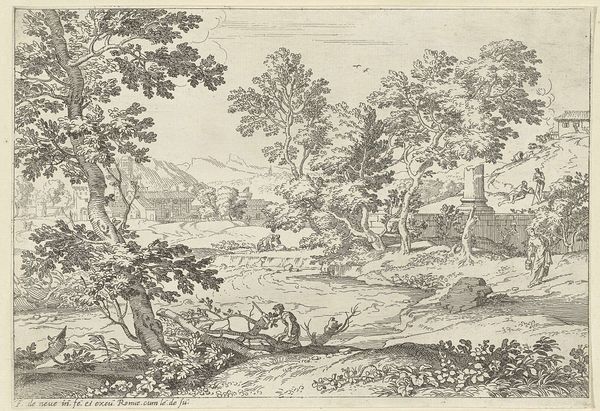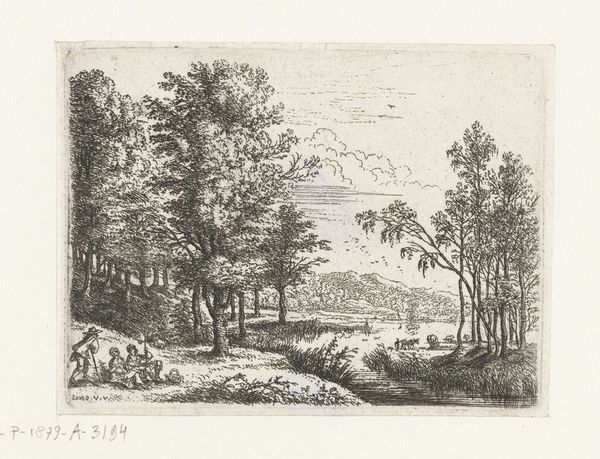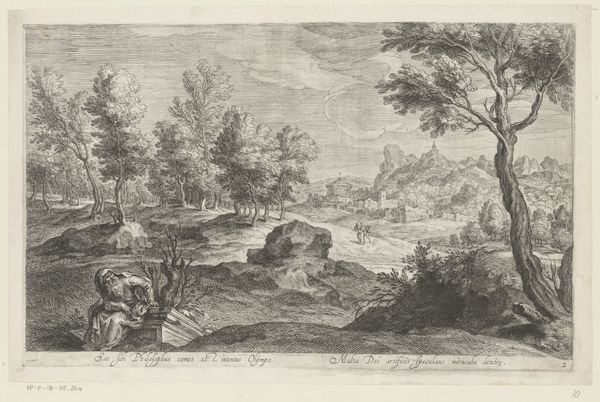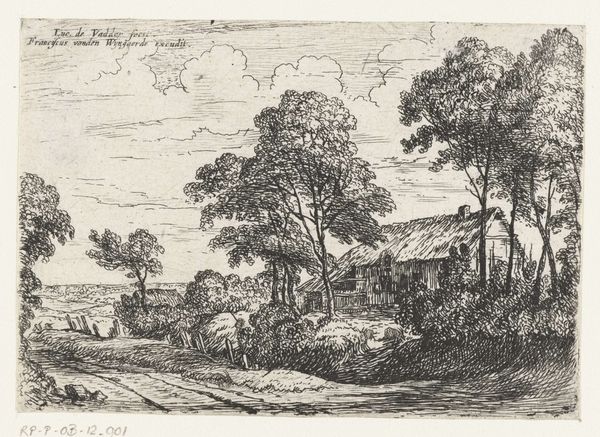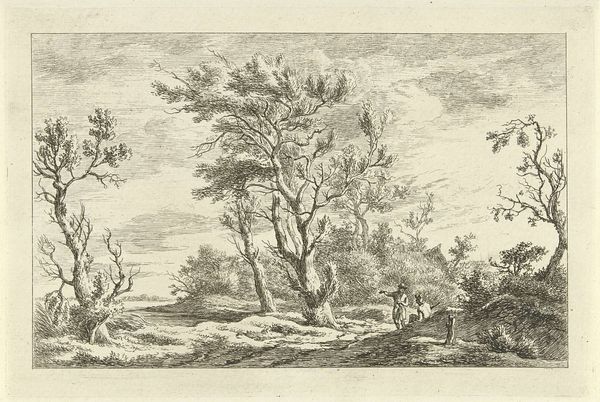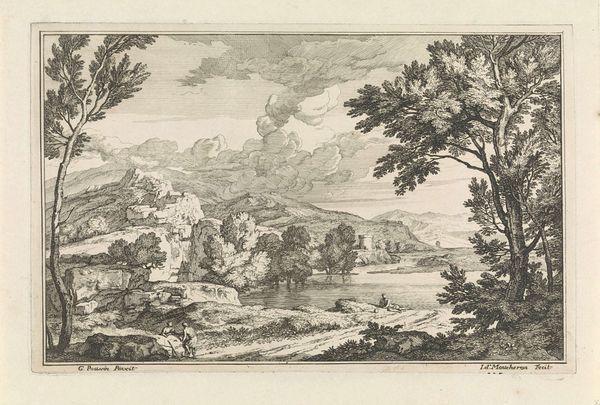
etching, engraving
#
baroque
#
etching
#
landscape
#
cityscape
#
engraving
Dimensions: height 172 mm, width 258 mm
Copyright: Rijks Museum: Open Domain
Isaac de Moucheron made this landscape scene with a fisherman, using etching, sometime between 1667 and 1744. The image is spare, made by drawing through a prepared ground on a metal plate, which was then exposed to acid. The resulting incised lines hold ink, which is then transferred to paper. The character of this print comes directly from that process. Look at how the artist renders the trees, with thousands of tiny strokes. It's a time-consuming act of labor. Etching was an important means of reproducing images at this time. Prints like this one were made to be sold at relatively low cost, and to circulate widely. So, while the image itself suggests a leisurely scene, there is also an undertone of industry. We should remember that Moucheron wasn't just an artist, he was also an entrepreneur, making his living in a rapidly evolving market for images. This print is an example of how the values of the art world were increasingly intertwined with those of commerce.
Comments
No comments
Be the first to comment and join the conversation on the ultimate creative platform.

